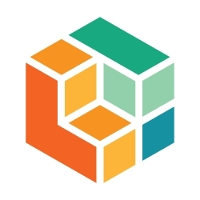It’s a fact — poorly-outlined requirements lead to unsuccessful projects and unhappy clients.
At LookThink, when we start a project our team tends to ask a plethora of questions to narrow down the requirements. Sometimes partners and clients are confused that we are asking such detailed questions that don’t seem critical to start a project.
So why are these questions important?
As a project strategist, my role is not only to make sure the project is delivered on time, but also to ensure delivery of a successful and complete product — whether this is a website, application, Salesforce implementation, or print piece. A successful project starts with clear requirements and expectations for the final deliverable, not just the first step.
When we take the time to have an in-depth and open dialogue about the pain points of the current system, the needs and wants for the new system, and what roadblocks have prevented improvements in the past, then we can accurately plan and mitigate risk as we move into a project.
Here’s are a few examples of typical questions we ask:
- Who are your target audiences? What does each need and want out of a system?
- How would you target audience describe your current product/website/application?
- How would you like them to describe it?
- What are the most complaints you receive about the current system?
- What ideas have you received to fix the issues?
- What metrics are you most concerned with moving the needle on?
- What elements of the current technical solution are holding you back most?
- What are the top 5 features you want to see in a new solution and why?
Having accurate and in-depth requirements for a new product leads to:
1. Successful Product and Implementation Planning
Does the product encompass everything the client imagined at the outset? Or did we need to prioritize and create a multi-release-based implementation plan? We ask important questions to ensure end users can start using the most critical functionality first and then layer in additional features and enhancements over time. Products can and should evolve along with user needs and expectations — so we always focus on future potential in addition to immediate needs.
2. Correctly Defined Scope and Timeline
Scope or timeline creep can happen when the client when a particular need or goal was missed when outlining the project or writing an RFP. We can typically avoid that by covering a comprehensive list of discovery questions at the onset of all engagements to ensure we’ve gathered every piece of information to accurately inform the timeline and scope.
3. Happy Clients and Partners
We aim to ensure every client and partner sees the value in our work and can truly measure the impact of our work. We want our clients to feel positive about the process, thrilled with the results, and excited to continue improving the piece of technology at hand. Gathering detailed, firm requirements at the onset of the project is the best way to put a project on the path to success — and something we relish doing with our clients.
